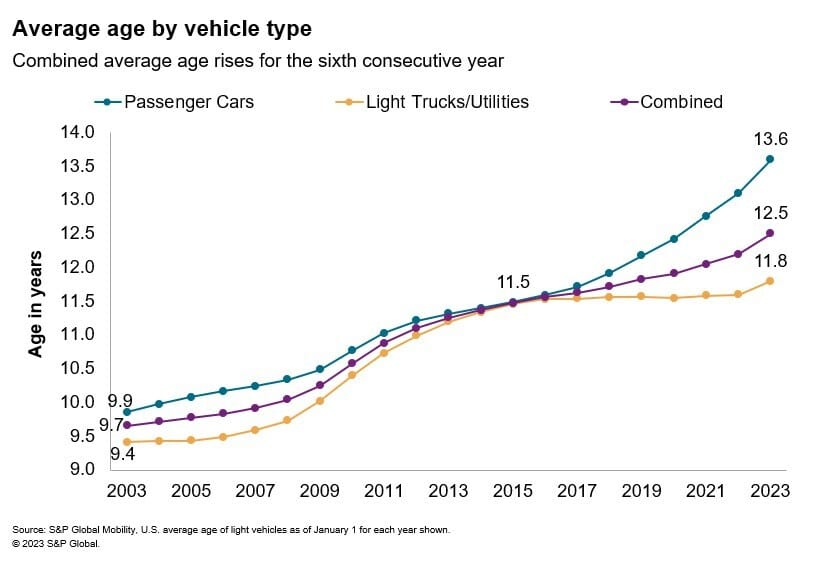In an era where sustainability is paramount, the longevity of vehicles has become a pivotal topic in discussions about reducing carbon footprints. Car longevity, or the average age of cars on the road, serves as a mirror reflecting consumer habits, technological advancements, and environmental implications. Have you ever wondered which brands are the champions of endurance in the automotive world? As we delve into this inquiry, we will unveil the intricate nuances of car longevity by brand, while also addressing the implications for our planet.
Understanding the average age of cars is crucial in framing the context of automotive trends. In the United States, the average car has reportedly aged to over 12 years, as consumers opt to hold onto their vehicles longer. This shift is multifaceted, driven by economic factors, advancements in car reliability, and a growing awareness of sustainability. As we navigate this burgeoning trend, it’s essential to recognize which brands are leading—and which ones are lagging—when it comes to longevity.
Brand-by-Brand Breakdown
According to various studies, certain brands consistently rank higher in terms of vehicle longevity. Brands like Toyota, Honda, and Subaru are often heralded for their durability and ability to withstand the test of time. Owners frequently report vehicles lasting well beyond the 200,000-mile mark, a figure that denotes superb engineering paired with attentive maintenance. Toyota, in particular, has cultivated a reputation for reliability, largely due to its manufacturing processes, continuous innovation, and robust parts supply.
Contrastingly, luxury brands often exhibit a shorter average vehicle lifespan, despite their significant initial investment. They tend to depreciate more rapidly, leading to shorter ownership periods. Consumers are enticed by the allure of new technology and the prestige of more premium models, which contribute to higher turnover rates. As a result, brands such as BMW and Mercedes-Benz showcase impressive advancements in technology but may not hold up as well in longevity metrics.
The Role of Technology
Modern vehicles are being engineered with advanced materials and technologies that enhance their lifespan. Innovations in engine design, corrosion-resistant materials, and improved fuel efficiency dramatically influence the longevity of a vehicle. Additionally, regular software updates, especially in electric and hybrid models, can extend their usability. Tesla, for instance, has been praised for its innovative energy solutions and vehicles that maintain their operational integrity far longer than traditional gas-powered vehicles.
But as technology evolves, are we inadvertently fostering a throwaway culture? With the rapid pace of innovation, it’s tempting for consumers to trade in their vehicles for the latest models, even when their current cars are still fully operational. This mindset poses an ecological challenge, as producing new vehicles involves substantial resource extraction and environmental degradation. The pivotal question arises: can we strike a harmonious balance between technological advancement and environmental stewardship?
Environmental Considerations
With global warming and climate change being central issues of our time, the environmental implications of car longevity cannot be ignored. The carbon footprint of producing a new vehicle, including materials, manufacturing processes, and transportation, contributes substantially to greenhouse gas emissions. In contrast, prolonging the lifespan of existing vehicles mitigates environmental harm. It stands to reason that consumers might consider maintaining their vehicles longer not just for economic reasons, but also for ecological ones.
Another vital aspect to consider is the lifecycle of vehicles—how they are disposed of at the end of their operational life. A focus on longevity must be accompanied by responsible recycling and disposal practices to ensure that hazardous materials embedded in vehicles, such as lead-acid batteries and various plastics, do not contribute to environmental degradation. Brands committed to sustainability are advancing in these areas, offering programs to recycle parts and reduce waste.
Consumer Responsibility
Ultimately, the onus falls on consumers to make informed decisions about their vehicle purchases and maintenance practices. By investing in brands celebrated for longevity, consumers can extend the lifespan of their vehicles and minimize their ecological impact. Moreover, regular maintenance and responsible driving habits can also significantly enhance vehicle longevity. Simple practices, such as timely oil changes and proper tire inflation, can lead to years of additional functionality. A playful challenge stands before you: can you commit to maintaining your vehicle longer and thereby contribute to a more sustainable future?
Conclusion
In conclusion, car longevity is not merely a statistic—it’s a crucial element of our collective commitment to combat climate change. By understanding the average age of vehicles by brand, we can recognize the broader implications for our planet. Wood, coal, and metals drawn from the Earth to forge new vehicles could be spared through conscientious vehicle ownership practices. As we chart a course forward in a world increasingly aware of its ecological responsibilities, let car longevity not be just a brand competition, but a commitment to sustainability. Let us rally together, embracing the challenge of keeping our cars longer while honoring our responsibility to the environment.
